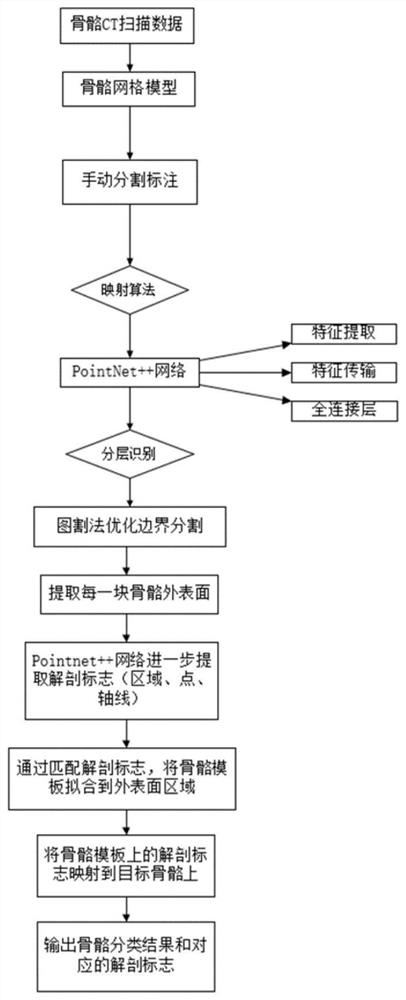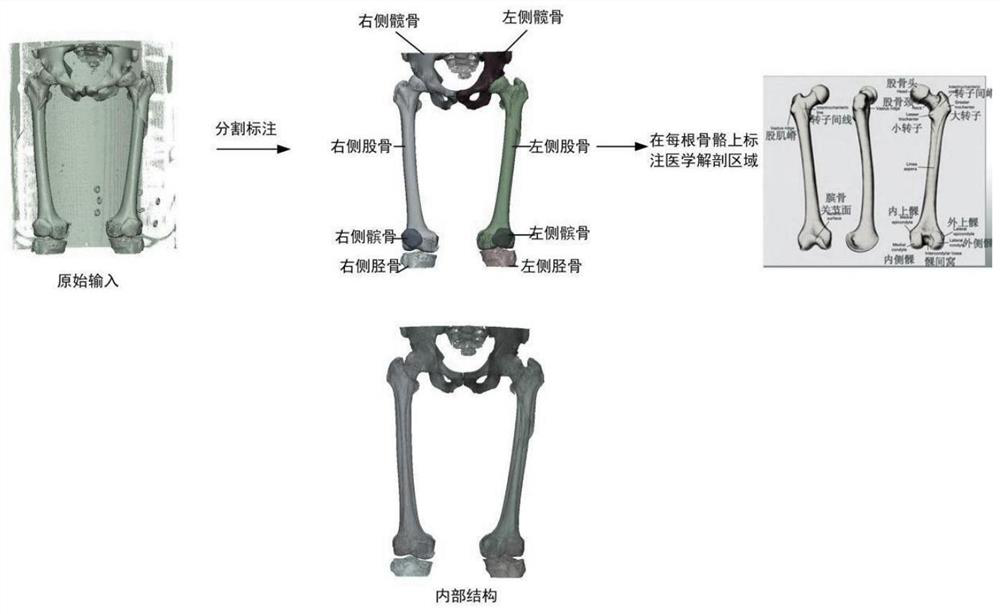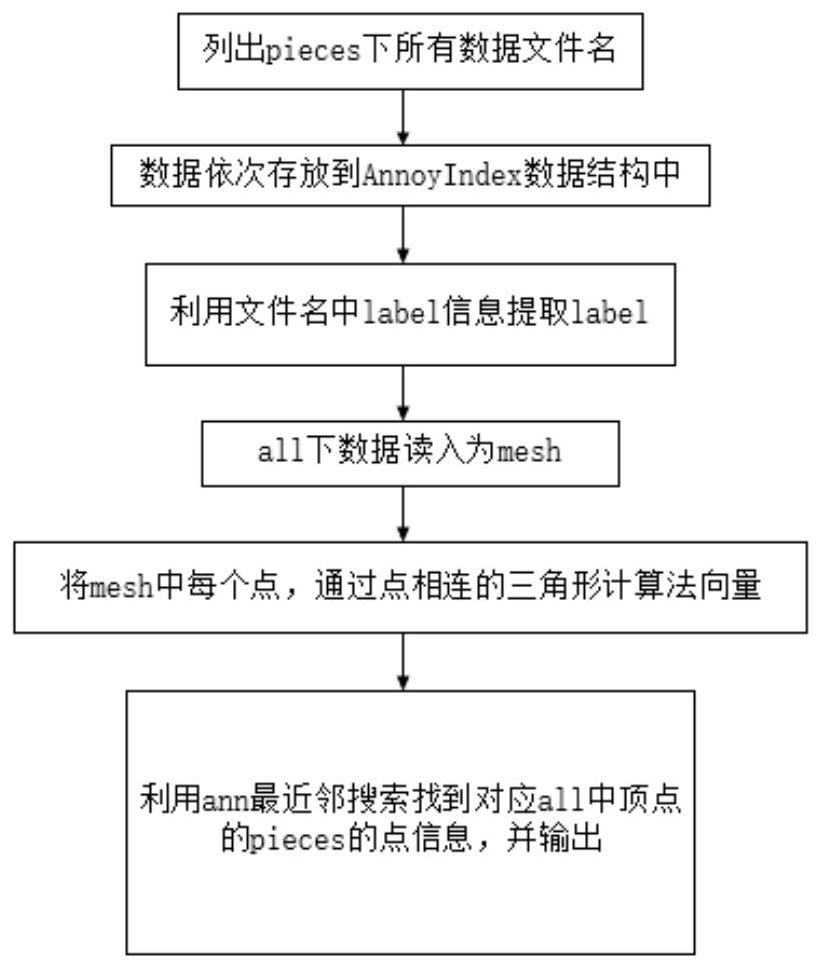Human body three-dimensional skeleton model marking method based on data driving and template guiding
A skeletal model, data-driven technology, applied in the field of digital medicine, can solve the problems of time-consuming and labor-intensive, low degree of automation, inability to meet the actual needs of 3D, and achieve the effect of effective integration and processing with high degree of automation.
- Summary
- Abstract
- Description
- Claims
- Application Information
AI Technical Summary
Problems solved by technology
Method used
Image
Examples
Embodiment
[0058] A data-driven and template-guided human 3D bone model labeling method, combining figure 1 The flowchart shown includes the following steps:
[0059] Step 1: Transform CT medical scan data into a 3D skeletal mesh model in Mimics software, and manually segment and mark the obtained 3D skeletal mesh model (such as figure 2 shown);
[0060] Step 2: Utilize the mapping algorithm (such as image 3 As shown), the normal vector of each point in the marked three-dimensional skeletal mesh model obtained in step 2 and the three-dimensional coordinates of the label information combination point are output to a text file;
[0061] The specific steps are:
[0062] S2.1 Use file IO operations to list all data file names under pieces
[0063] S2.2 Store the data in the AnnoyIndex data structure in sequence
[0064] S2.3 Use the label information in the file name to extract the label
[0065] S2.4 read the data under the all folder into mesh
[0066] S2.5 For each point in the m...
PUM
 Login to View More
Login to View More Abstract
Description
Claims
Application Information
 Login to View More
Login to View More - R&D
- Intellectual Property
- Life Sciences
- Materials
- Tech Scout
- Unparalleled Data Quality
- Higher Quality Content
- 60% Fewer Hallucinations
Browse by: Latest US Patents, China's latest patents, Technical Efficacy Thesaurus, Application Domain, Technology Topic, Popular Technical Reports.
© 2025 PatSnap. All rights reserved.Legal|Privacy policy|Modern Slavery Act Transparency Statement|Sitemap|About US| Contact US: help@patsnap.com



